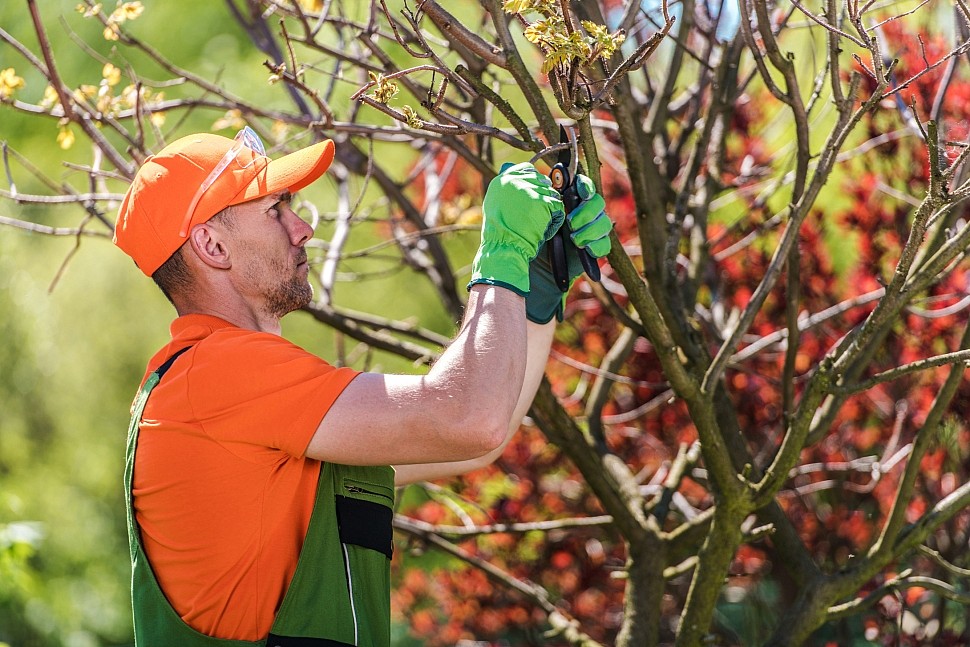Tree trimming is an essential aspect of maintaining the health and beauty of your landscape. However, knowing when to trim trees is crucial for ensuring their growth and longevity. The best time to prune trees varies depending on the type of tree, the climate, and the specific goals of trimming. In this article, we will explore the best months for Tree Trimming in Dallas TX, considering different factors to help you make informed decisions.
Understanding the Importance of Tree Trimming
Before diving into the best months for tree trimming, it’s important to understand why this practice is necessary:
- Promotes Healthy Growth: Regular trimming removes dead or diseased branches, allowing the tree to focus its energy on healthy growth.
- Enhances Aesthetics: Pruning shapes trees and improves their appearance, making them more visually appealing.
- Improves Safety: Removing weak or overgrown branches can prevent potential hazards, such as falling limbs during storms.
- Encourages Fruit Production: For fruit-bearing trees, proper trimming can enhance fruit quality and yield by improving air circulation and sunlight exposure.
The Best Months for Trimming Trees
- Late Winter to Early Spring (February to April)
Generally, the best time to trim most deciduous trees (trees that lose their leaves in winter) is during late winter to early spring, before new growth begins. This period is often referred to as “dormant season,” as the trees are not actively growing.- Benefits: Trimming during dormancy minimizes stress on the tree, encourages new growth in the spring, and allows you to easily see the tree’s structure without leaves obstructing your view. Additionally, any wounds from pruning will have time to heal before the tree enters its active growing phase.
- Exceptions: Some trees, like maples and birches, may bleed sap if pruned during this time. While this doesn’t harm the tree, it can be unsightly. If you have these types of trees, consider pruning them just after they finish blooming.
- Summer (June to August)
Summer can also be an acceptable time to trim trees, particularly for maintenance purposes. However, it’s essential to avoid excessive pruning during this period.- Benefits: Summer pruning allows you to remove unwanted branches and promote air circulation within the tree’s canopy, reducing the risk of disease. It’s also an excellent time for shaping trees that have already bloomed.
- Considerations: Be cautious about trimming during the hottest months, as this can stress the tree. Focus on light pruning rather than heavy trimming, and ensure to water the tree adequately if you must prune during the summer.
- Fall (September to November)
Generally, late fall is not the ideal time to prune most trees. However, some exceptions exist.- Benefits: If you’re trimming specific types of trees, such as oak or elm, fall can be a good time. Trimming during this period helps to reduce the risk of pest infestations and diseases, as many pests are less active in the cooler months.
- Considerations: Avoid heavy pruning in the fall, as trees are preparing for dormancy. Cutting too close to winter can expose the tree to harsh conditions and limit its ability to heal.
Special Considerations for Different Tree Types
While the above guidelines provide a general framework for when to trim trees, it’s important to consider the specific type of tree:
- Fruit Trees: Prune most fruit trees in late winter or early spring. Some varieties, such as cherry and peach trees, may benefit from light summer pruning after fruit harvest.
- Evergreens: Coniferous trees, like pines and spruces, can be trimmed in late spring or early summer. Avoid heavy pruning in late fall, as this can weaken the tree.
- Flowering Trees: For trees that flower in the spring, such as magnolias or dogwoods, prune them immediately after they finish blooming to avoid cutting off next year’s buds. Trees that bloom in summer or fall, like crepe myrtles, can be trimmed in late winter or early spring.
Tips for Successful Tree Trimming
- Use the Right Tools: Invest in quality pruning shears, loppers, and saws to ensure clean cuts, which help the tree heal more effectively.
- Know the Right Techniques: Learn proper pruning techniques, such as the three-cut method for larger branches, to avoid damaging the tree.
- Avoid Over-Pruning: Removing too much foliage can stress the tree and lead to health issues. Aim to trim only what is necessary for health and aesthetics.
- Consider Hiring a Professional: If you have large trees or are unsure about the proper techniques, consider hiring a certified arborist. Professionals can assess the tree’s health and recommend the best approach for trimming.
Conclusion
The best month for Tree Care Company In Texas, depends on several factors, including the type of tree, local climate, and your specific goals for trimming. Generally, late winter to early spring is the ideal time for most deciduous trees, while summer can be appropriate for maintenance pruning. Always consider the unique characteristics of your trees and consult with professionals if needed.




